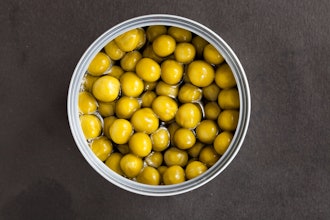
KANSAS CITY, MO — The U.S. Department of Agriculture’s National Institute of Food and Agriculture (NIFA) invested a total of $15M in two key programs awarded through its Agriculture and Food Research Initiative (AFRI) Food and Agriculture Cyberinformatics and Tools (FACT). NIFA awarded 18 Food and Agriculture Cyberinformatics Tools grants totaling $10.4 million to initiate research on big data analytics, machine learning, artificial intelligence, and predictive technologies needed to keep U.S. agriculture on the leading edge of food and agricultural production. NIFA also invested $5.1 million for 12 Nanotechnology for Agricultural and Food Systems grants to support nanotechnology-based solutions that improve food production, nutrition, sustainable agriculture and food safety.
“Big data and artificial intelligence will increasingly play a vital role in the future of agricultural technologies and innovation,” said NIFA Director Carrie Castille. “As we work to enhance farmer profitability and agricultural sustainability and realize precision nutrition for consumers, these technologies will keep research and development moving at a rapid pace to provide the tools needed for success.”
Example projects funded from the 18 Food and Agriculture Cyberinformatics Tools grants include new investigator Dr. Marek Borowiec’s University of Idaho project, “Harnessing Artificial Intelligence For Implementing Integrated Pest Management In Small-Grain Production Systems.” This project will develop an AI-based decision support system for identifying pests in wheat-based production systems. U.S. Ignite, Inc.’s project, “Platforms for Advanced Wireless: Research Rural Platform,” will form a public-private partnership to support creating four at-scale experimental platforms for advancing fundamental wireless research to enable rural broadband to benefit customers in rural communities, and by attracting and retaining skilled networking jobs in the local community.
Some projects funded from the 12 Nanotechnology for Agricultural and Food Systems grants include: Montana State University’s project, “Transforming Wood into High-Performance Engineering Material with Cellulose Nanocrystals,” to help add value and expand the use of wood, help forest farmers generate additional revenue, and create a new stream of jobs in rural areas America. Michigan State University’s project, “Fully Printed Electronics and Energy Devices via Low-dimensional Nanomaterials for Smart Packaging,” will develop a low-cost, wireless smart packaging system based on fully printed self-powered, sensor-based, radio-frequency identification tags to monitor food quality and safety from packaging, transportation, storage, and distribution to retail along a food supply chain.
Auburn University’s project, “Cellulose Nanocrystals: A Versatile Platform for the Detection of Allergens and Emerging Contaminants,” is focused on developing cellulose nanocrystals as a versatile platform for rapid, low-cost, multiplexed detection of food allergens and emerging contaminants in water and food.
NIFA invests in and advances agricultural research, education, and extension across the nation to make transformative discoveries that solve societal challenges. NIFA supports initiatives that ensure the long-term viability of agriculture and applies an integrated approach to ensure that groundbreaking discoveries in agriculture-related sciences and technologies reach the people who can put them into practice. In FY2020, NIFA’s total investment was $1.95 billion.






















